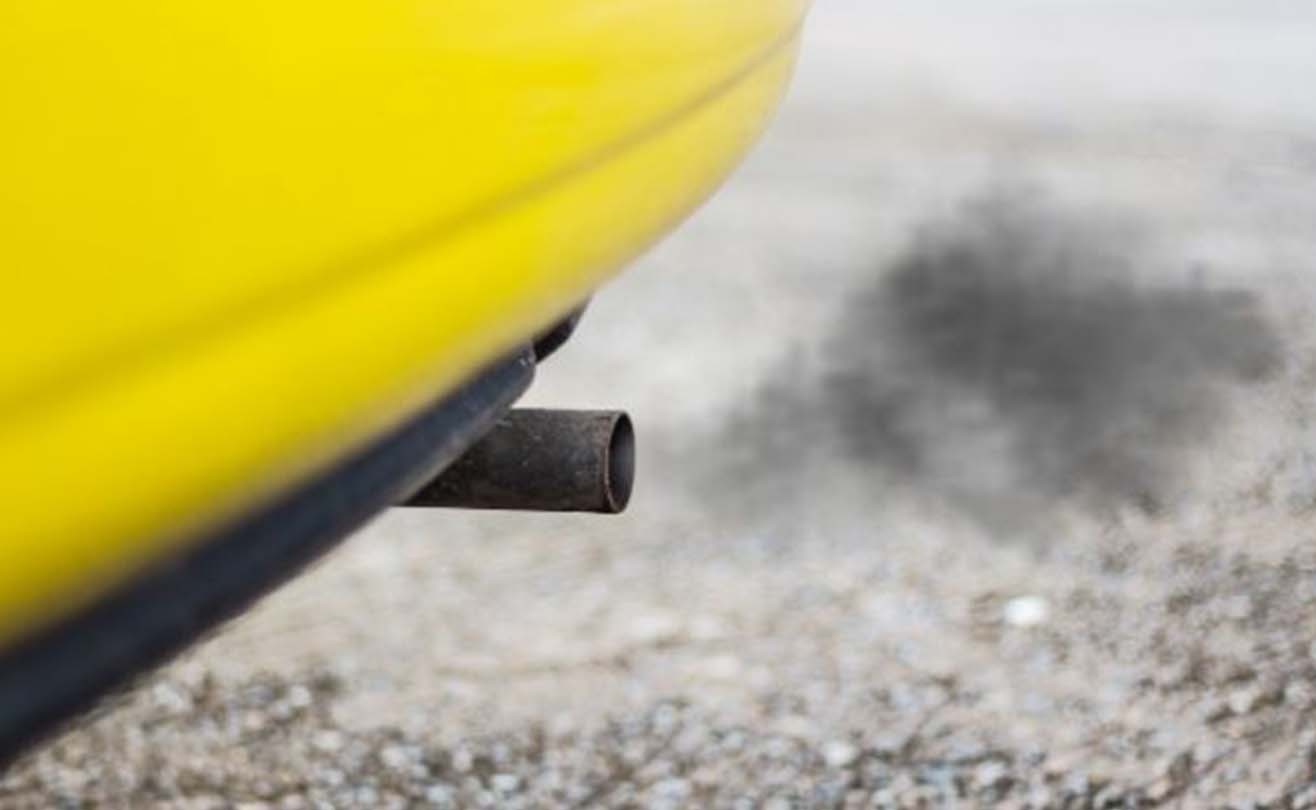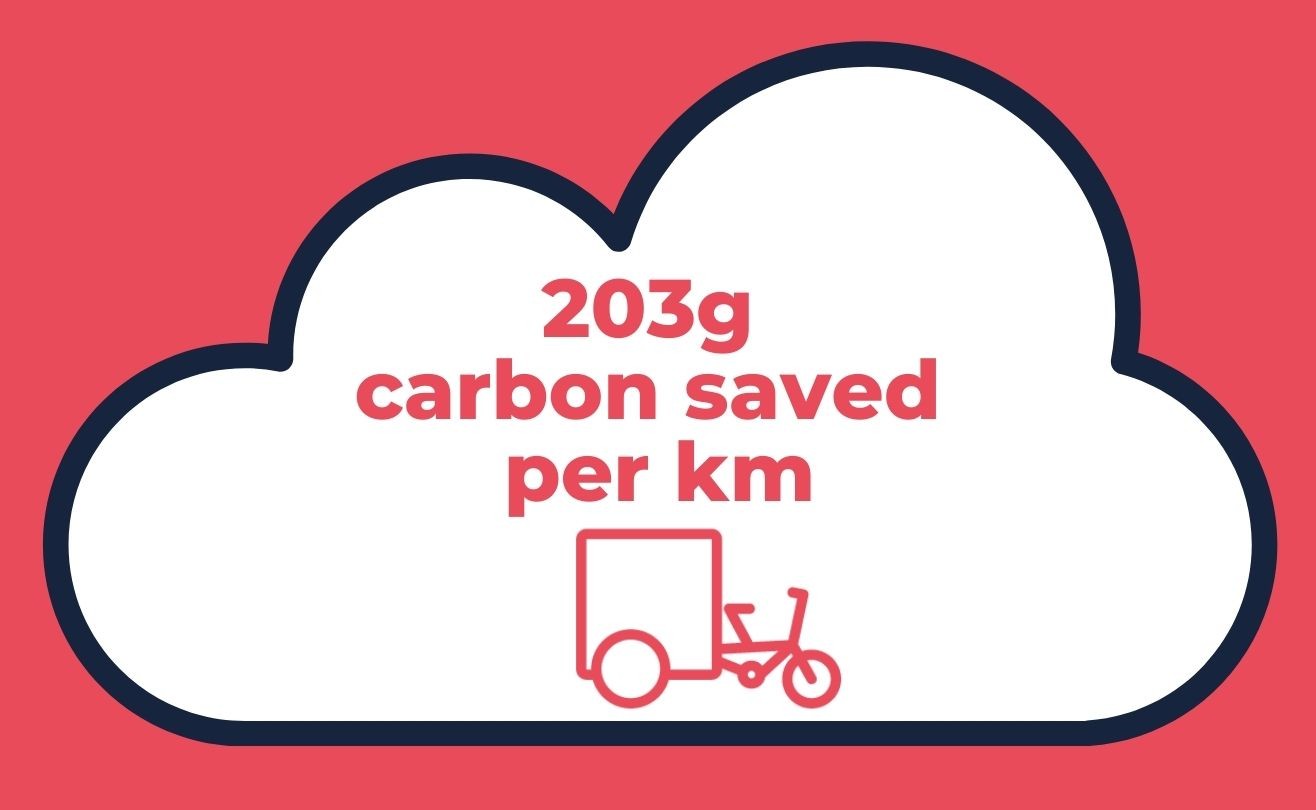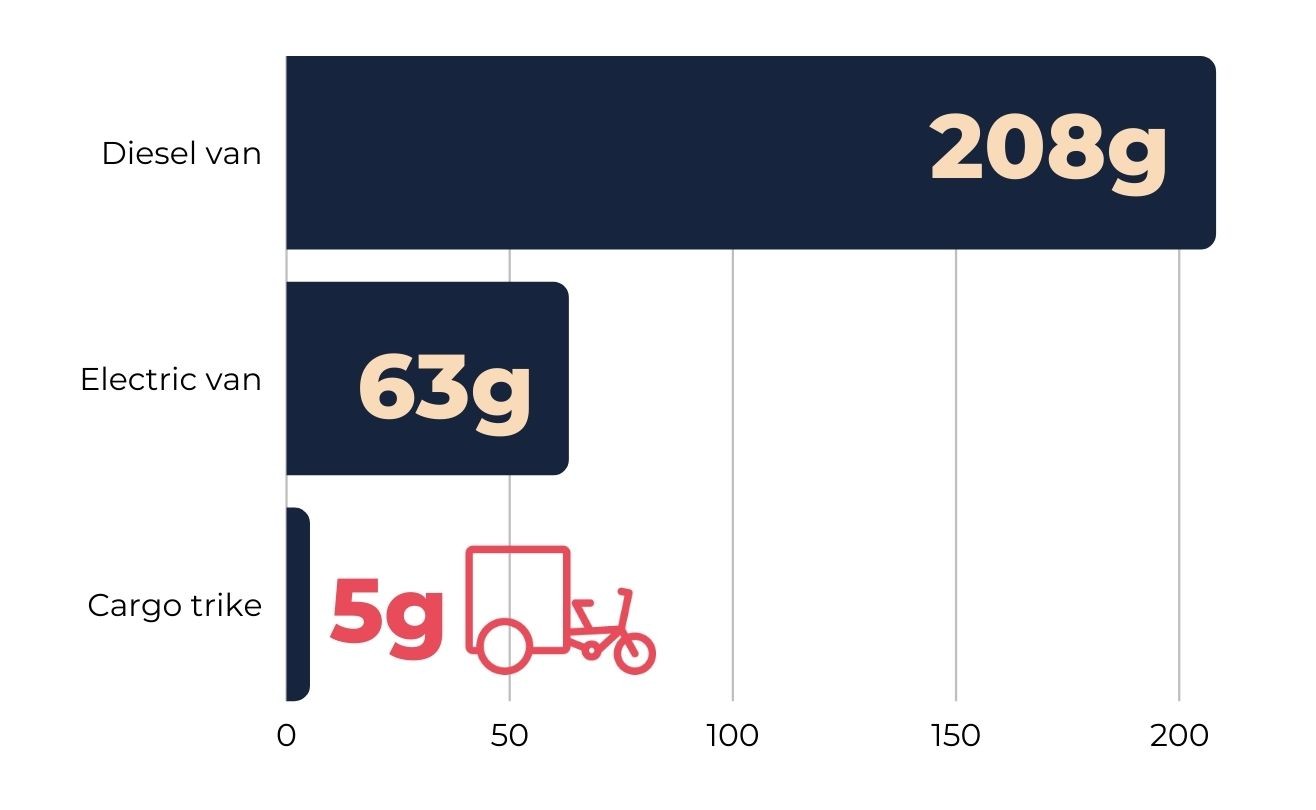It’s all about Better Cities
At Zedify, we’re on a mission to transform cities into better places to live and work, with cleaner air and more liveable streets. With 64,000 early deaths attributed to dirty air in the UK each year, it’s vital we find better, cleaner ways of moving goods around.

Our efficient micro hubs allow us to operate right in the middle of each city, using light electric assisted vehicles such as cargo bikes and trikes. By working with hundreds of businesses in 9 cities across the UK, our zero emission deliveries are making waves. But there’s so much more to be done. According to research published by the Energy Saving Trust, up to 50% of urban deliveries could be made by cargo bike.
Our purpose at Zedify is to drive that shift to cleaner deliveries, making sure as many packages as possible are moved using zero emissions. Our customers are local businesses, national retailers, medical services, recycling companies, local authorities and parcel carriers, and by working with us they are making bold steps to tackle their impact on air quality and climate change.
A word about zeros
The term zero emissions has been known to ruffle some feathers. We understand these concerns, after all, what human activity doesn’t lead to emissions of some sort? It depends what you’re counting: you could look at embodied energy in the clothes that a person is wearing, or perhaps what they’ve eaten to power their own bodies.
Widely adopted as a label for vehicles that have no emissions at the tailpipe, ‘zero emissions’ means no toxic, polluting exhaust and no carbon dioxide from burning fossil fuels in an engine. It’s important to be clear about what our sustainability claims mean and, at Zedify, we choose to describe our service in this way because it has zero tailpipe emissions. The term is simple, it’s currently widely used across the logistics sector, it’s descriptive and we believe it helps more people to get on board with a better approach to deliveries.

How much climate warming CO2 does Zedify save?
The quick answer
In terms of operating emissions, electric cargo bikes, trikes and quads save between 203 and 206.2g of CO2 per kilometer compared with modern Euro 6 compliant diesel vans. That’s a 98-99% carbon saving.

Compared with a typical electric van (EV) CO2 savings for using electric cargo bikes, trikes and quads are between 58 and 61.2g per kilometer or 91-97%.
The detailed answer
A typical diesel van such as a 3.5t Mercedes Standard Sprinter panel van will emit 208g of CO2 per kilometer. A typical EV such as Mercedes E Sprinter panel van with a 55kWh battery will emit no CO2 at the tailpipe, but emissions from the energy used to charge the battery will be around 63g of CO2 per kilometer. This is based on 2020 national grid carbon intensity data which shows an average of 150g per kWh. We’ve assumed 10% charging losses, which brings that figure up to 165g per KWh.
As we’ve mentioned a couple of times already, our own fleet has zero emissions at the (non-existent) tailpipe but we have also looked at the emissions resulting from energy used to charge the batteries, and calculated those. Our 2-wheeled electric cargo bikes have 500 watt hour batteries which have an estimated range of 45km. So, to fully charge each battery using 0.55kWh, would use 82.5g of CO2 and it would lead to CO2 emissions of 1.8g per kilometer. Our electric cargo trikes and quads typically have 1000 watt hour batteries and an estimated range of 35km, so they would cause 165g of CO2 to be emitted to charge each battery and this would lead to emissions of approximately 5g CO2 per kilometer.
What about embodied energy?
A standard 3.5t diesel van will be responsible for between 5 and 7t of CO2 from manufacturing and disposal. An EV comes in at even higher, at around 8-9t. As yet, there aren’t any detailed studies on the embodied emissions of cargo bikes or light electric vehicles, but we have estimated the embodied energy to produce and dispose of a cargo bike, trike or quad is around 0.25t of CO2 or 4% of what’s used for a 3.5t van, based on relative weight.
Can you measure Zedify’s impact on air quality?
Nitrogen oxide (NOx) and particulate matter (PM) are the most common measurements of a vehicle’s impact on air quality. A study by the Cross River Partnership found that cargo bikes travelling 80km per day have been shown to save 14.1kg of NOx annually and 21g of PM, compared to a diesel van. Zedify cargo bikes and trikes typically cover around half that mileage each day, bringing the saving down to around 7.05kg NOx annually, and around 0.5g NOx per kilometer.
How about emissions from the rest of the delivery journey?
We don’t measure the impact from emissions that arise from delivery journeys which are not part of our operations, for example, an inter-city Heavy Goods Vehicle (HGV) trip. Our mission is currently all about improving delivery journeys within cities. HGV’s and vans are efficient at transporting goods on motorways but when you put that same vehicle in a city centre, those efficiencies are lost. The NOx and PM emissions from diesel vehicles will have concentrated health impacts within densely populated areas and large vehicles are also a concern in terms of road safety and congestion. Cities are absolutely vital to the whole UK economy, and it’s reported that current congestion levels are costing around £6.9 billion in lost earnings each year.
All of these factors point towards a clear imperative for micro hubs, hyper local deliveries and re-moding to clean forms of delivery vehicles such as electric cargo bikes, trikes and quads. As Zedify grows, and vehicle technology evolves, the ‘trunking’ journeys between cities (and from manufacturers into cities) is something we will look to operate ourselves using zero emissions.
Thanks for reading, and if you have any questions about our figures or ideas for how we could measure our impact in different ways, we’d love to hear from you. Please write to us at hello@zedify.co.uk


 December 14th, 2021
December 14th, 2021 Harriet Hird
Harriet Hird 6 minute read
6 minute read


